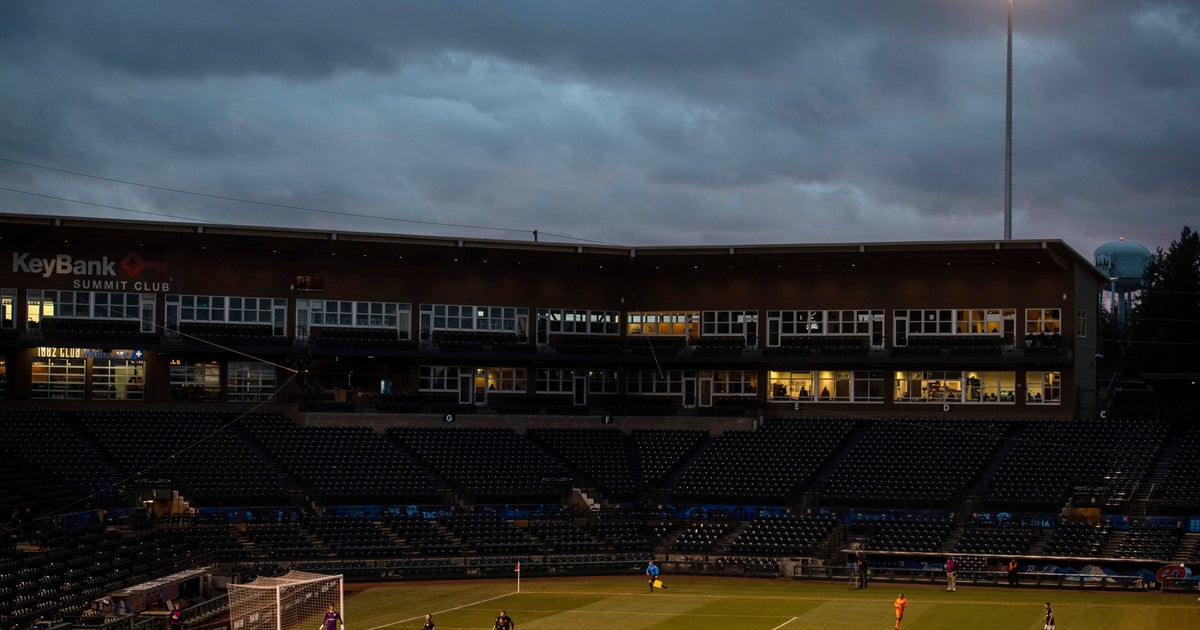Pandemic could change landscape of minor league sports


As North America’s pro football, basketball, baseball and hockey leagues try to play again in a pandemic, minor league sports face a more treacherous climb to return.
While the NFL, NBA or Major League Baseball can run on television revenue, it’s virtually impossible for many minor leagues to survive with empty stadiums. The possibility of no games in 2020 could put some teams in jeopardy and change the landscape for attendance-driven sports in the short- and long-term future.
“There’s no future for minor league sports with empty stadiums. There’s zero,” said Gary Green, who owns Triple-A and Double-A baseball teams and an expansion franchise in the United Soccer League that plays in suburban Omaha, Nebraska. “If some of the teams don’t have deep-pocketed ownership groups or owners, I don’t know how they’re going to pay their bills.”
It is by far the most pressing question facing Minor League Baseball, the American Hockey League, ECHL, USL and others. The minors are deeply baked into the North American sports landscape as talent developers for the majors and cheap, family-friendly entertainment in towns big and small. Experts are divided on how they will survive and how soon they can bounce back.
MLB Commissioner Rob Manfred estimated a 40% loss of revenue if baseball is played with no fans and Herrick Feinstein sports law group co-chair Irwin Kishner estimated it is probably twice that for minor league sports. As it is, Green doesn’t expect minor league baseball this year, while both the ECHL and the AHL canceled the rest of their hockey seasons.
Plans for 2020-21 include the grim possibility of empty or near empty arenas.
“There’s a million questions that need to be answered,” minor league hockey player Nathan Paetsch said. “What’s next season going to look like? What’s the possibility of it starting? What type of season is it going to look it? Is there going to be fans or no fans? Is it going to be the same length of the season?”
Smith College economics professor Andrew Zimbalist agreed with Green that ownership will affect which teams survive. He also pointed to the ill-fated second attempt by the XFL as a cautionary tale.
“Some of the younger leagues that are out there I think are really, really fragile,” Zimbalist said. “I suspect that we’re going to see a lot of organizations and some leagues going out of business.”
There were already 40 minor league baseball teams scheduled for contraction before the pandemic under an MLB restructuring plan.
Beyond those teams, Syracuse University sports analytics professor Rodney Paul is worried about the status of others as the crisis goes on. He said there could be a redistribution of teams in multiple sports around the U.S. and Canada — and perhaps smaller leagues.
“Maybe it’s the same number of teams but it’s in different cities based upon how things have changed over time,” Paul said. “Some of those areas that can’t afford that level of team because of either population change or income change in the area or something like that changes to a different area. But my guess gets to be that the longer this goes out, the fewer of those minor league teams in total we’ll have.”
That worries Professional Hockey Players Association executive director Larry Landon because jobs will be lost if teams fold, and players like Cameron Gaunce might be left trying to make ends meet.
“I think you’d be naive if guys weren’t worried about It,” Gaunce said. “I’ll make sure that I plan far enough in advance and I’ll have a contingency plan in place, whether that’s getting something to supplement my income or whether that is playing in a league that is going.”
Pro leagues elsewhere could be operating, providing baseball, hockey and soccer players short of the elite level other opportunities. Foreign prospects could stay home longer to play.
Or North American minor leagues could discover different ways to make money. Kishner suggested mascot, coach or player appearances or selling ad space outside stadiums or arenas, and Paul pointed to gambling or daily fantasy game possibilities as potential sources of revenue.
AHL Rochester Americans GM Randy Sexton said he thinks minor league hockey teams can get going as long as 1,000-2,000 people are allowed in buildings. It might not be a full season, either.
“I think it may force us to be more creative,” AHL president and CEO David Andrews said. “I think we need to be really flexible as we look ahead as to what the league might look like and be open to whatever we need to be open to to do the best we can.”
Green has already thought ahead to what “socially distanced” crowds might look like and hopes treatments and a coronavirus vaccine gets things back to normal eventually. But the end of the pandemic may not be enough to pack minor league arenas and stadiums if Zimbalist is correct about the situation and economic downturn changing people’s behaviors.
“It’s just going to take several years to get through it all, in my view, and while that adjustment or recuperation is happening, it means that there’s going to be higher rates of unemployment, lower rates of income and people are going to be more careful about how they spend their free income, their leisure income,” Zimbalist said. “So I don’t expect the leagues to really start flourishing again for several years.”
Paul, whose parents are season-ticket holders for the Single-A baseball Daytona Tortugas, is more bullish on minor league sports in the near future because of their affordability and value to communities.
“Those types of entertainment experiences, we’re still craving those type of things,” he said. “Hopefully this doesn’t destroy that for the super long term or forever.”







